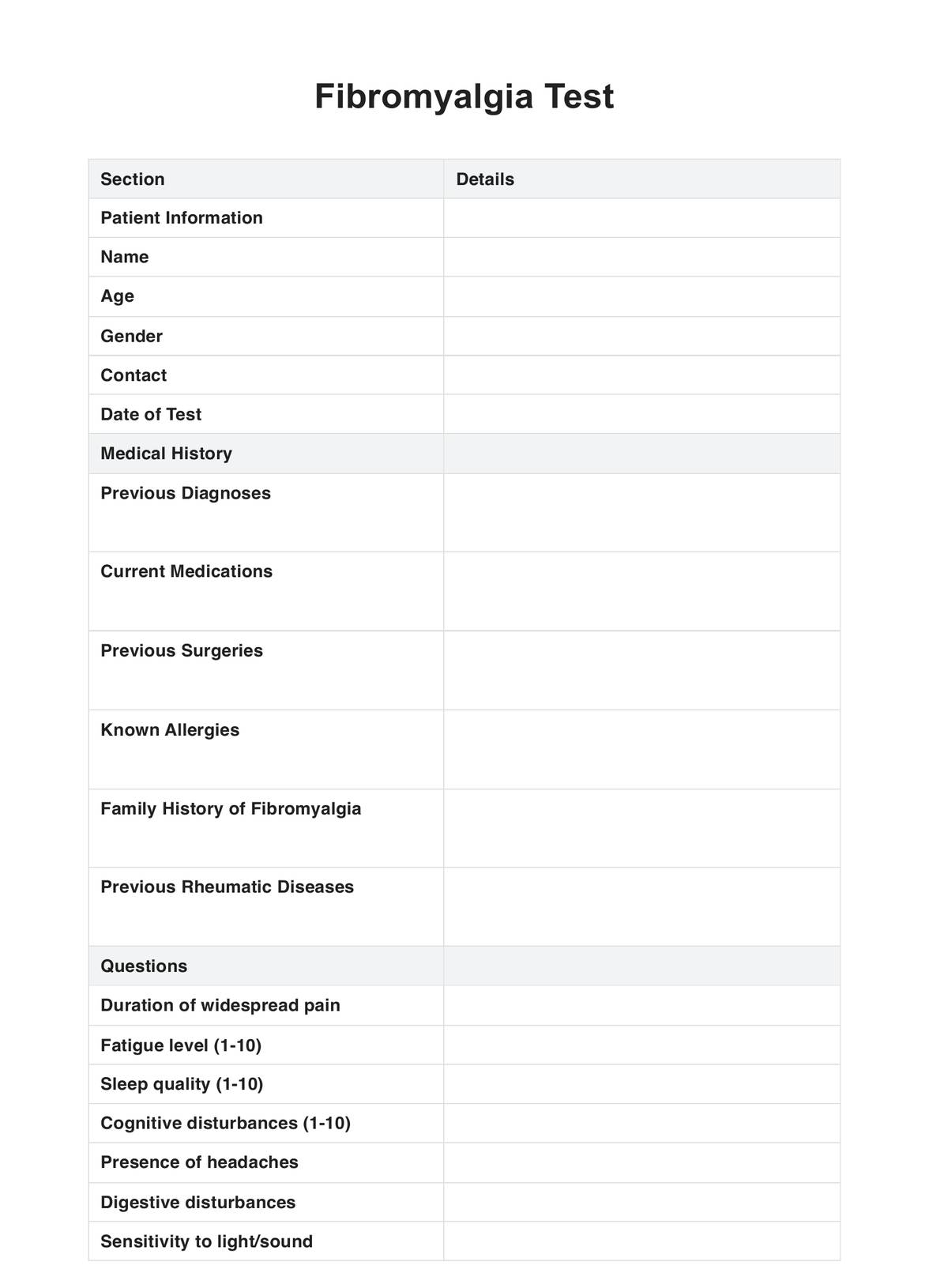Absolutely! While our test provides a comprehensive framework based on the latest research, Carepatron's platform allows easy customization to fit your patient's needs best.

Fibromyalgia Tests
Dive deep into fibromyalgia diagnosis with our comprehensive test guide. Download the free PDF and discover why Carepatron is the top choice for holistic care.
Use Template
Fibromyalgia Tests Template
Commonly asked questions
No, Carepatron is versatile and caters to various medical conditions, making it an excellent tool for holistic patient care across multiple ailments.
Patients will have secure login details, granting them access to their profiles, resources, symptom trackers, and direct communication with their healthcare team.
EHR and practice management software
Get started for free
*No credit card required
Free
$0/usd
Unlimited clients
Telehealth
1GB of storage
Client portal text
Automated billing and online payments











